
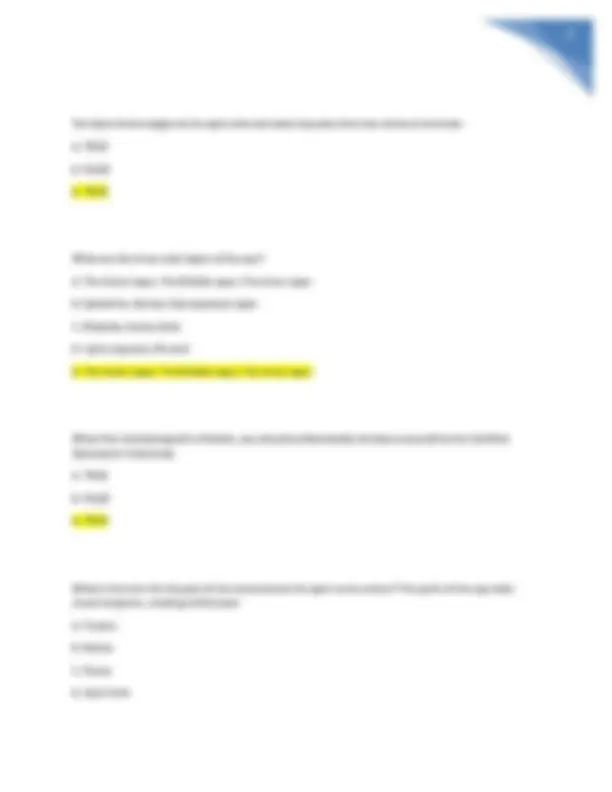
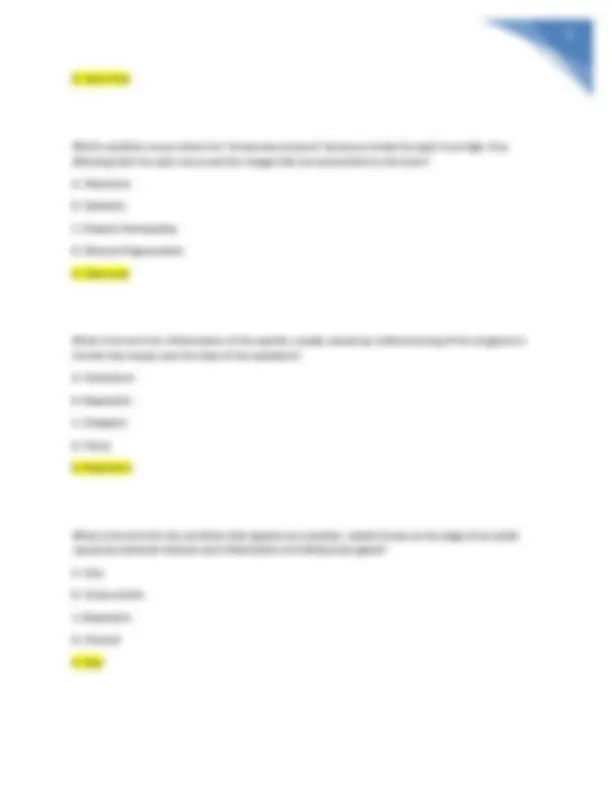
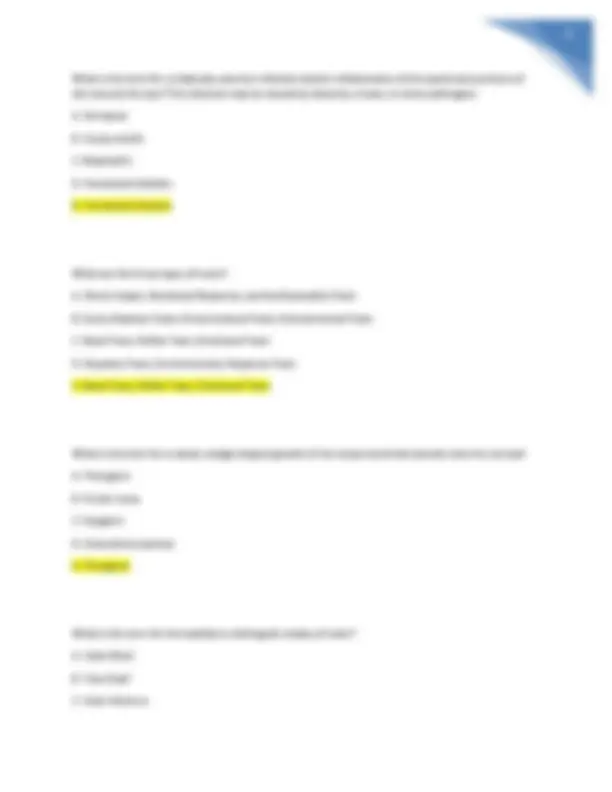
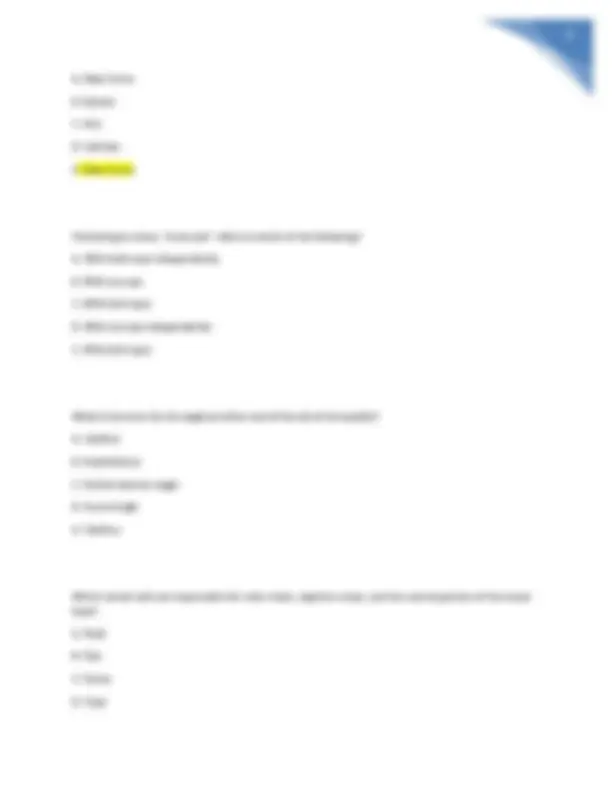
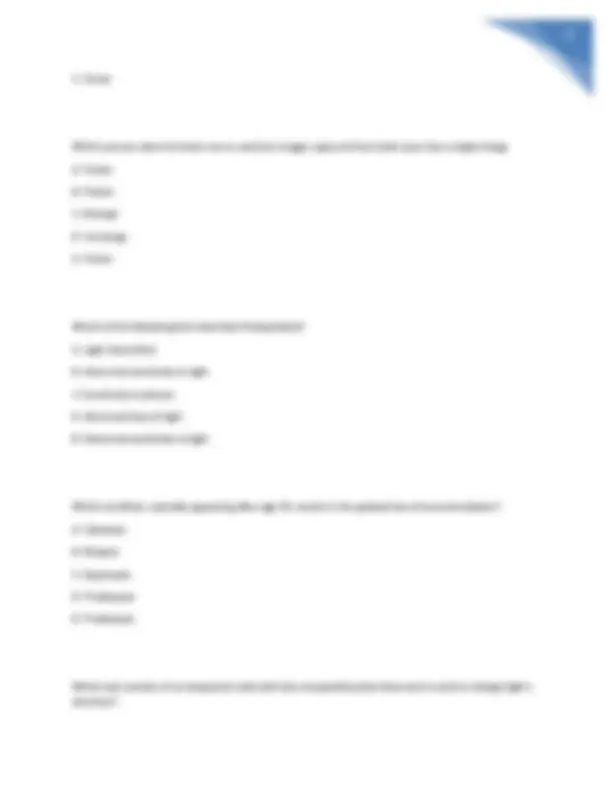
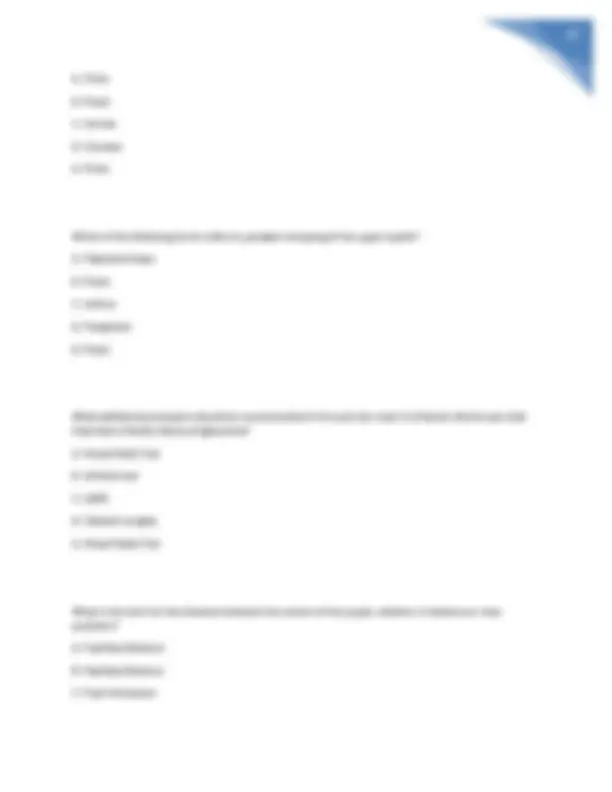
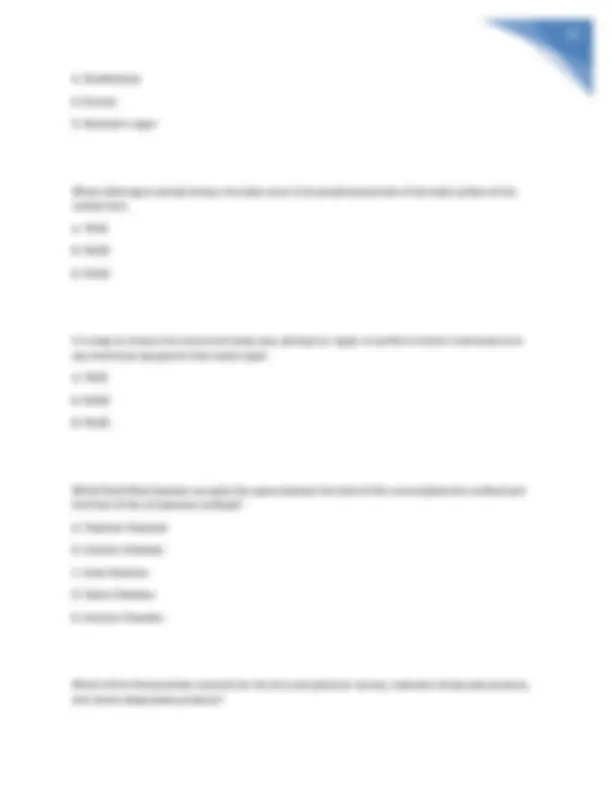
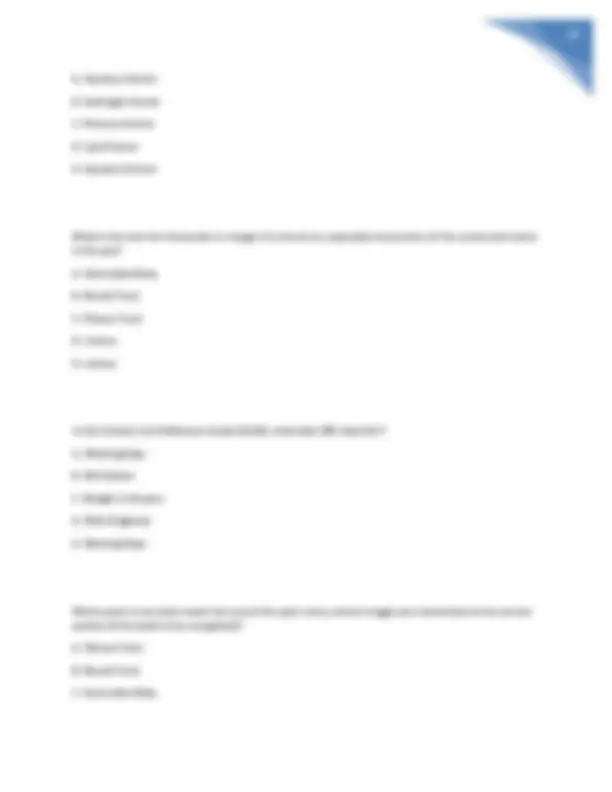
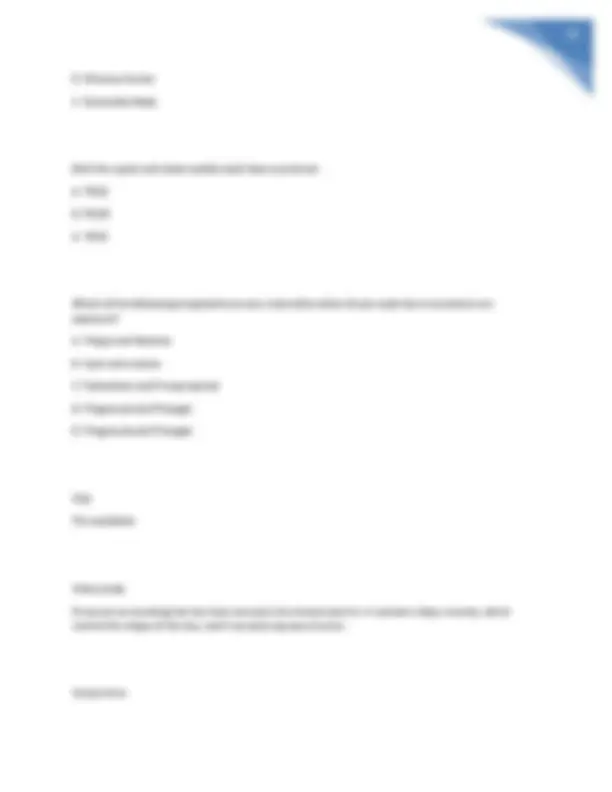
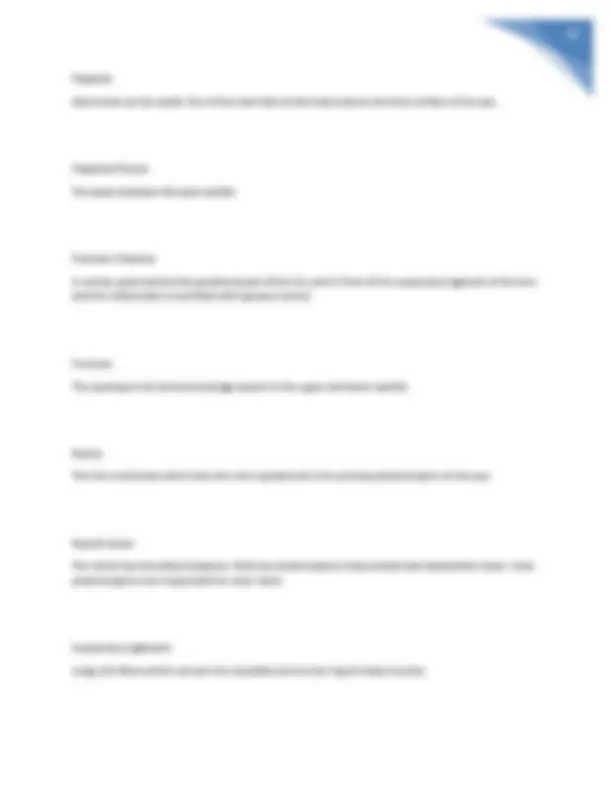
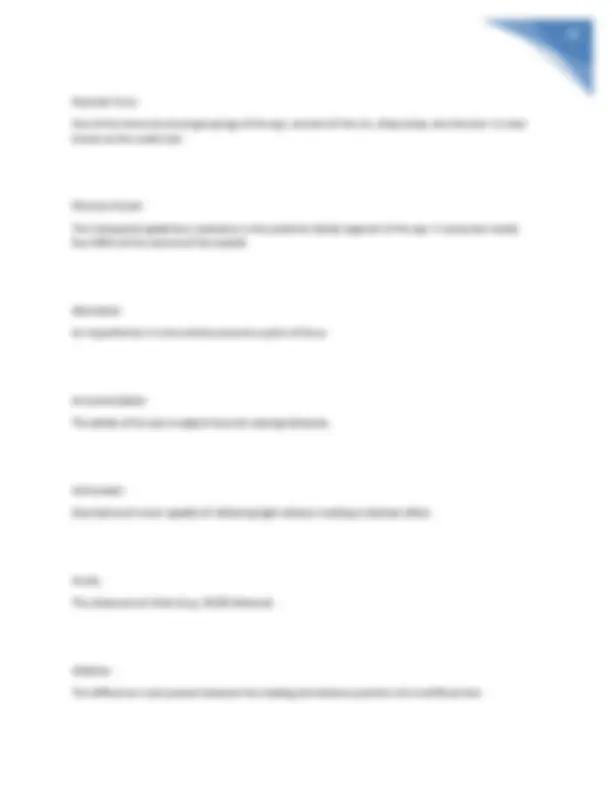
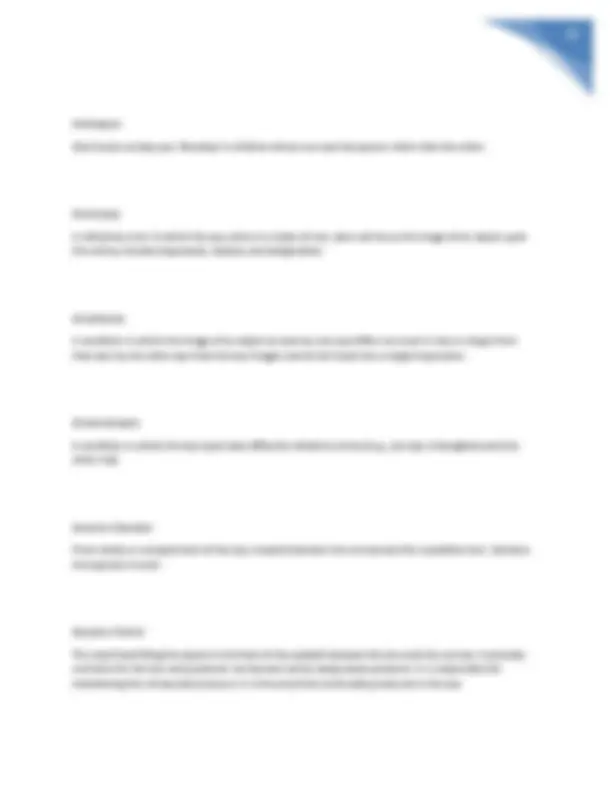
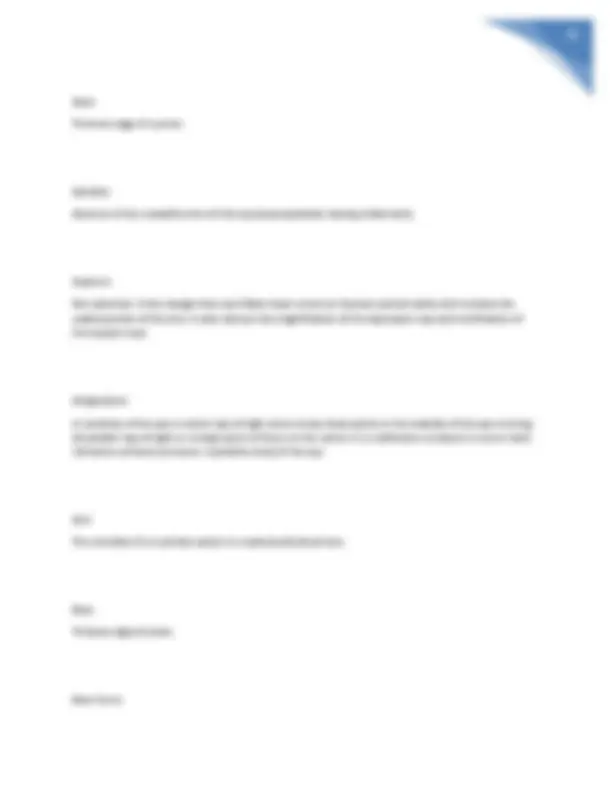
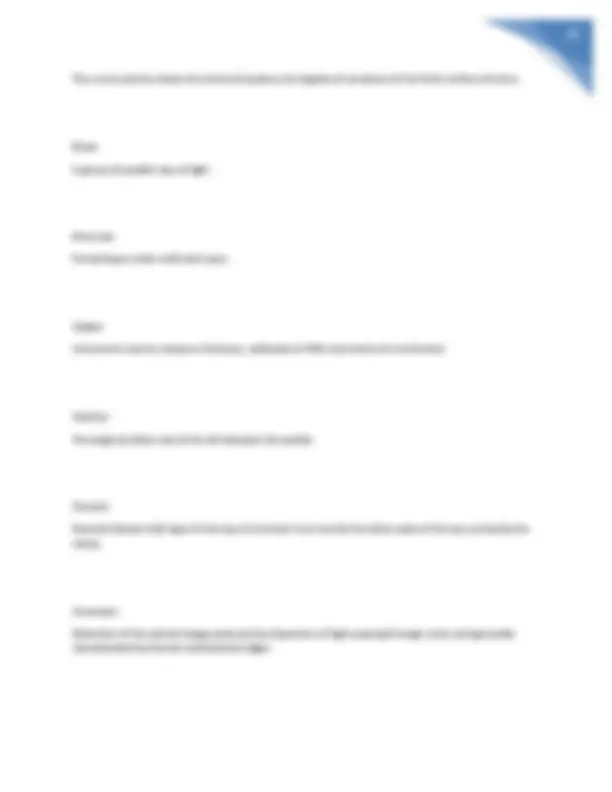
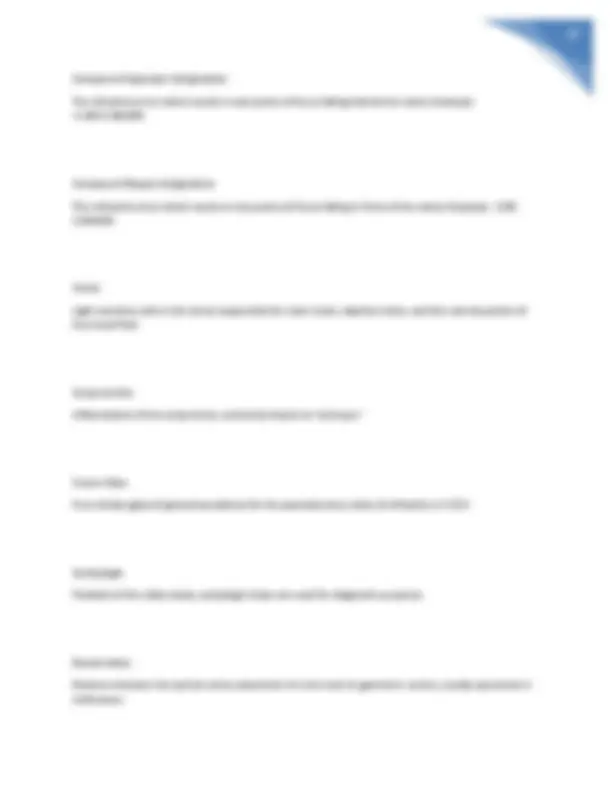
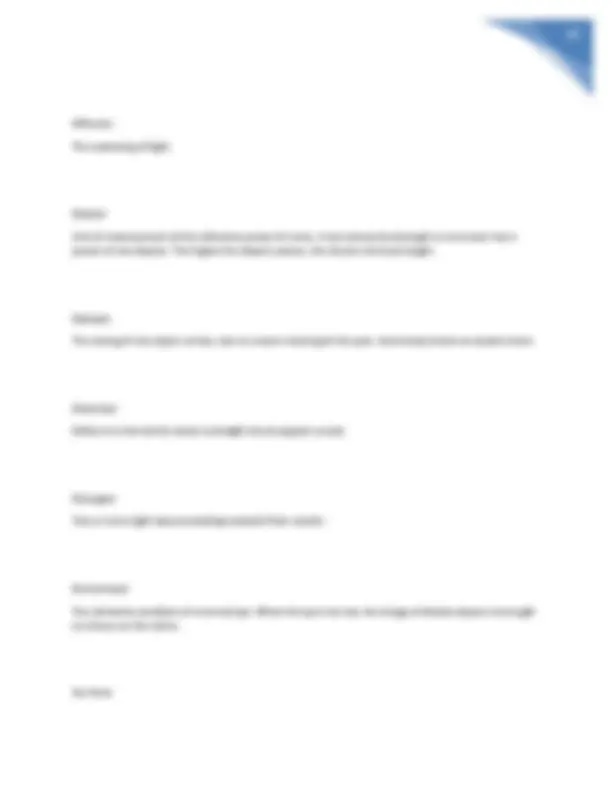
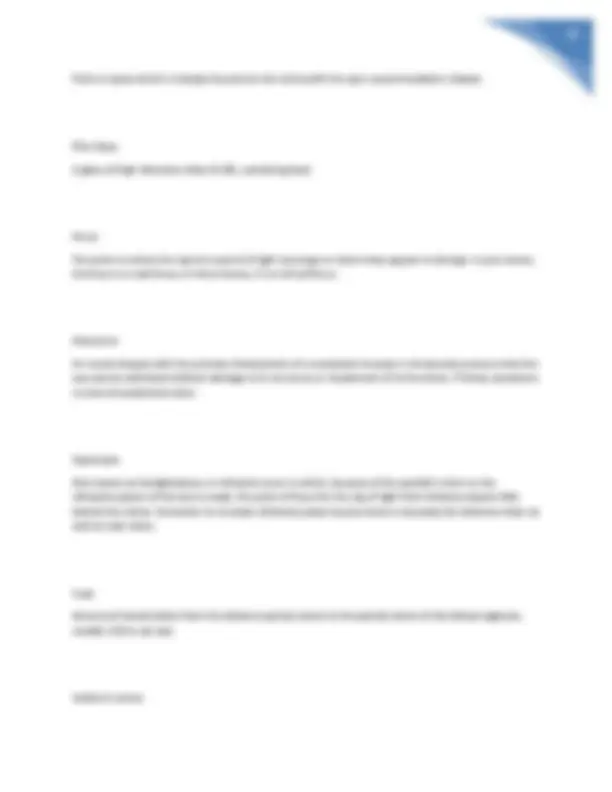
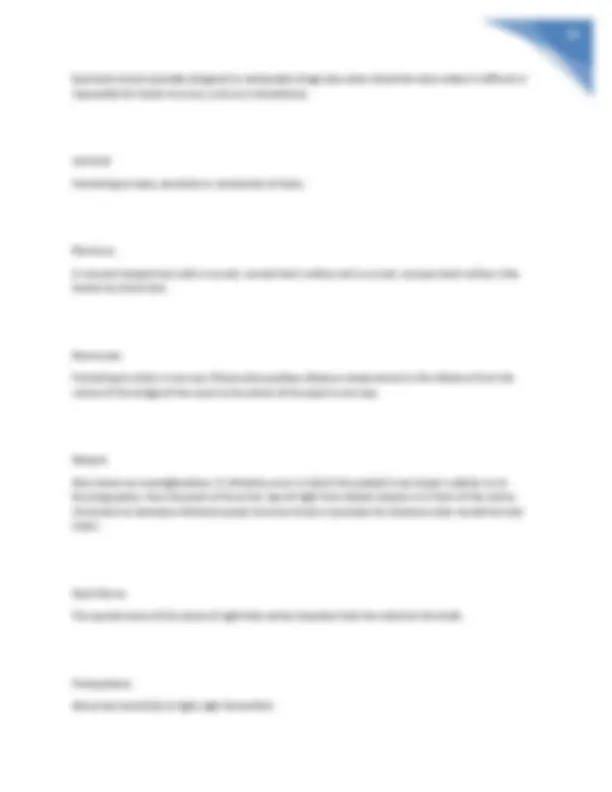
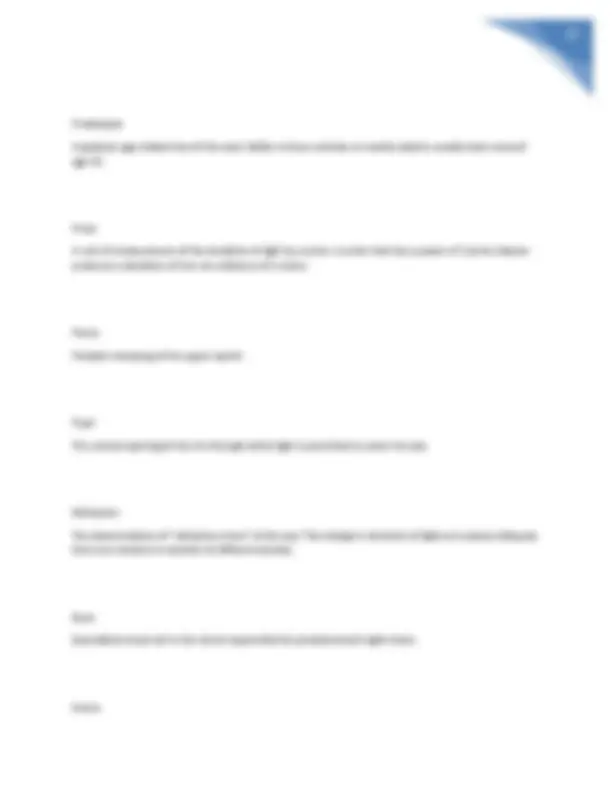
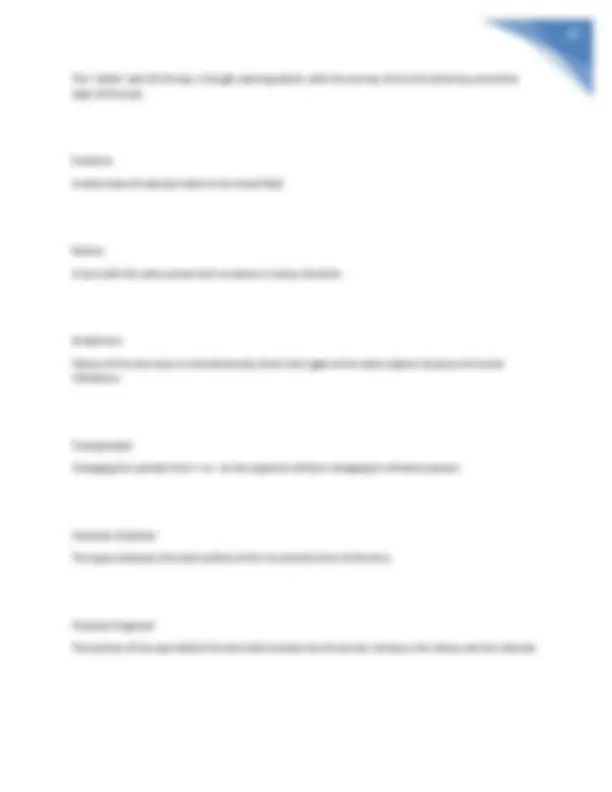
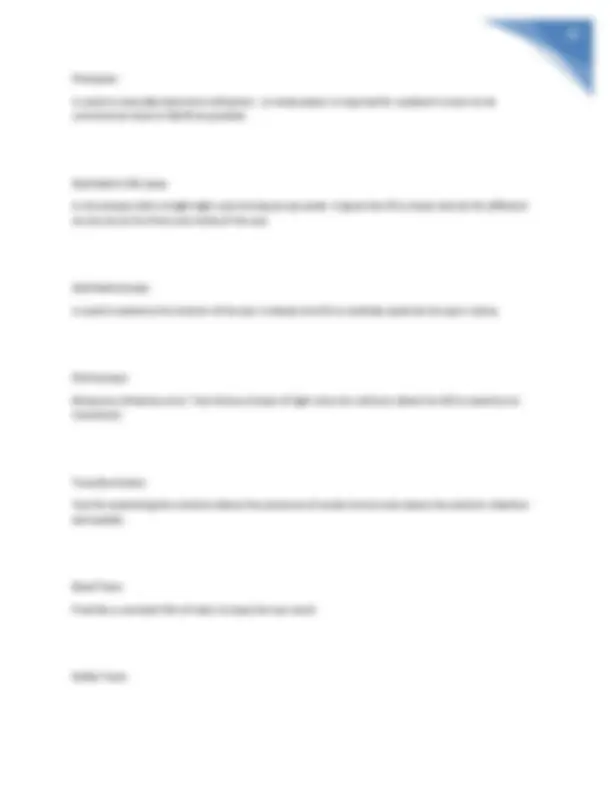
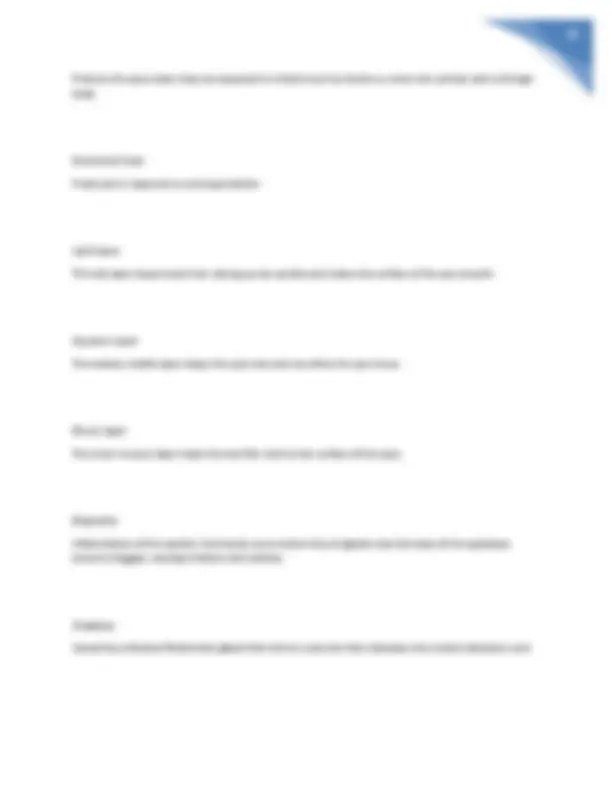
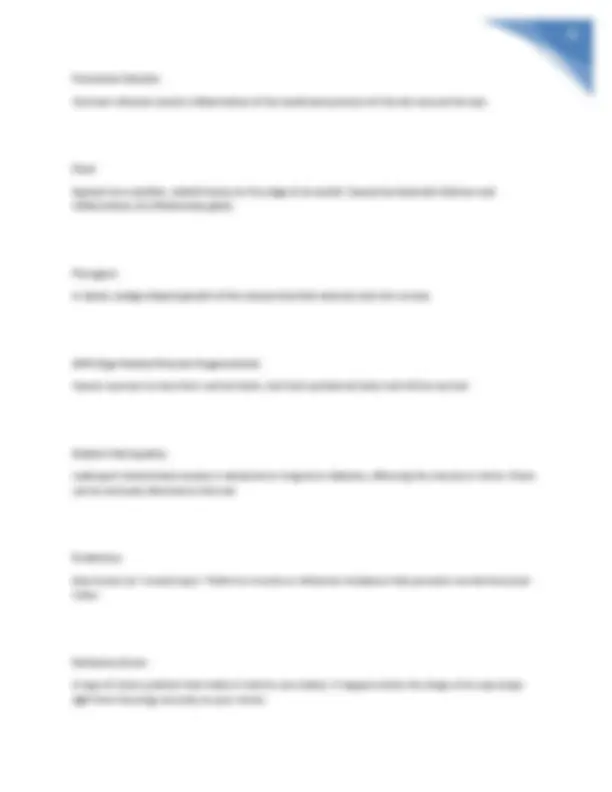
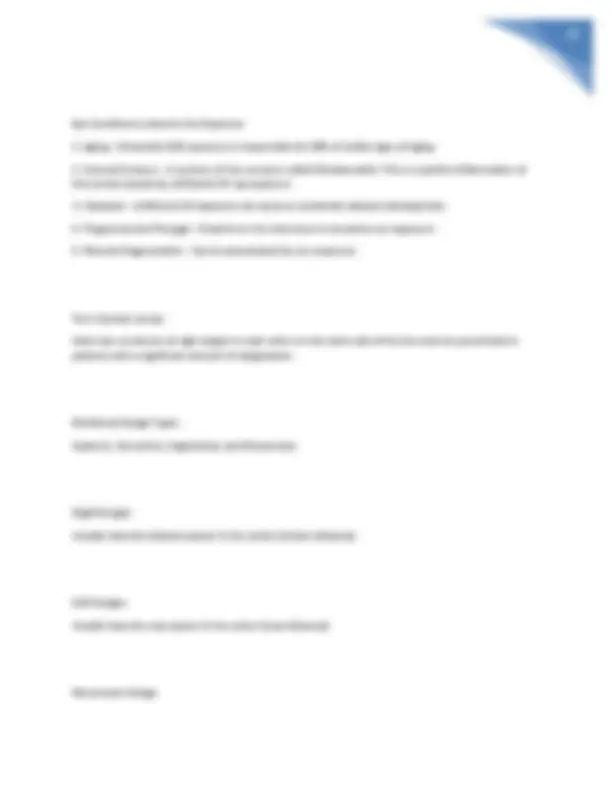
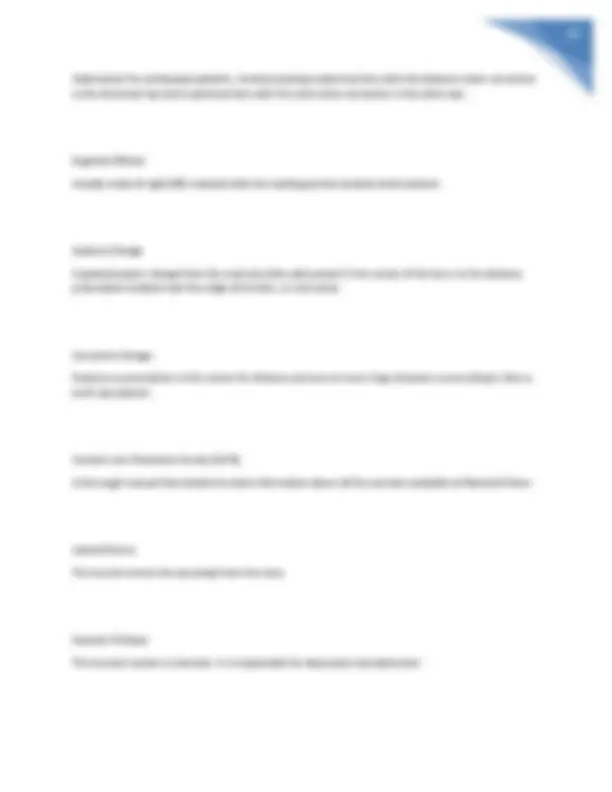
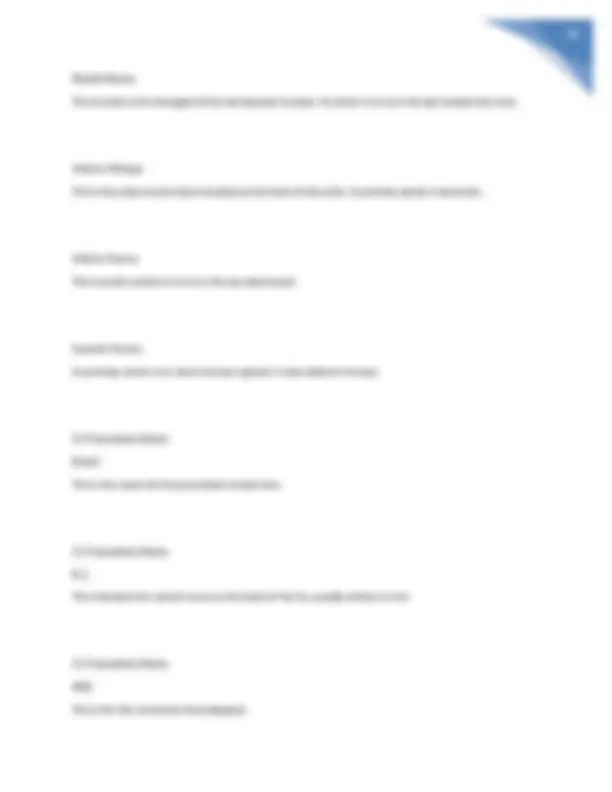
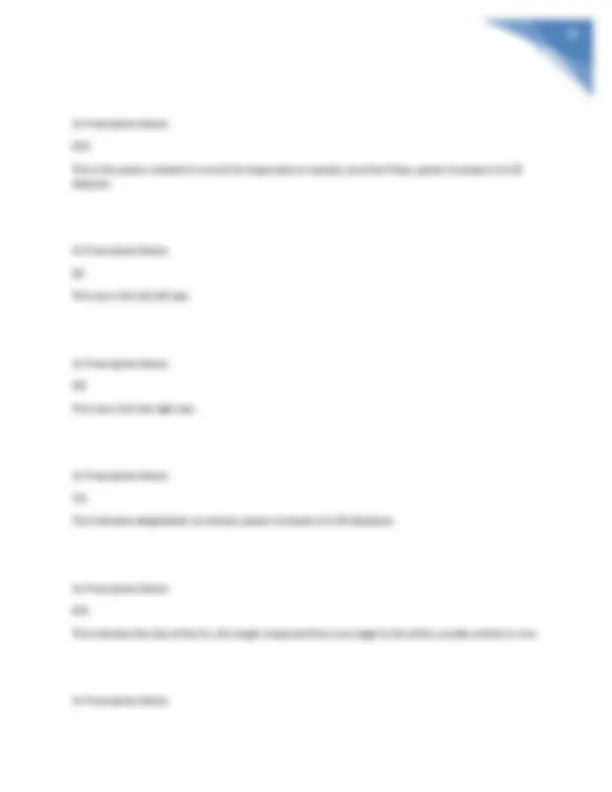
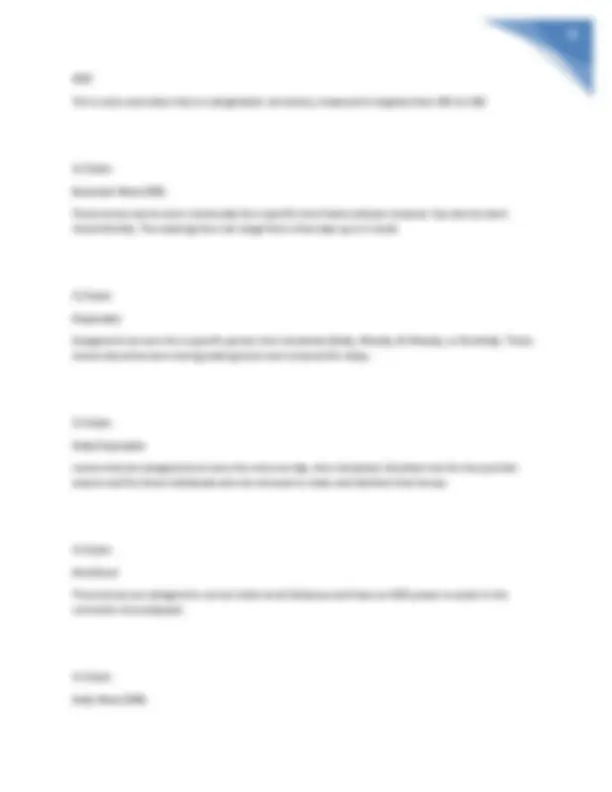
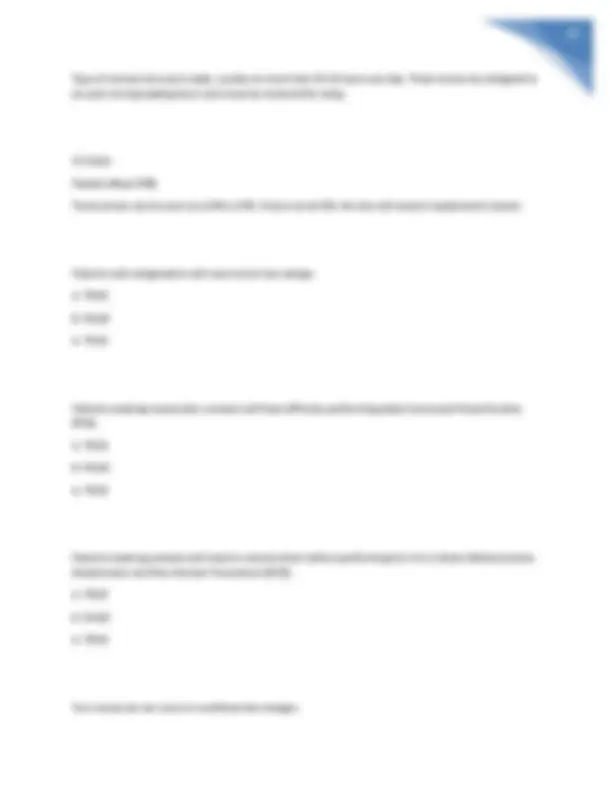
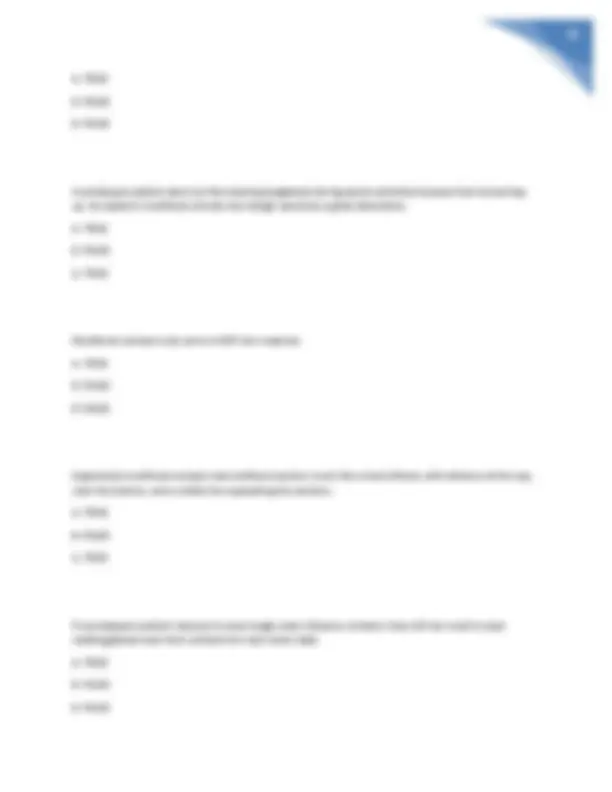
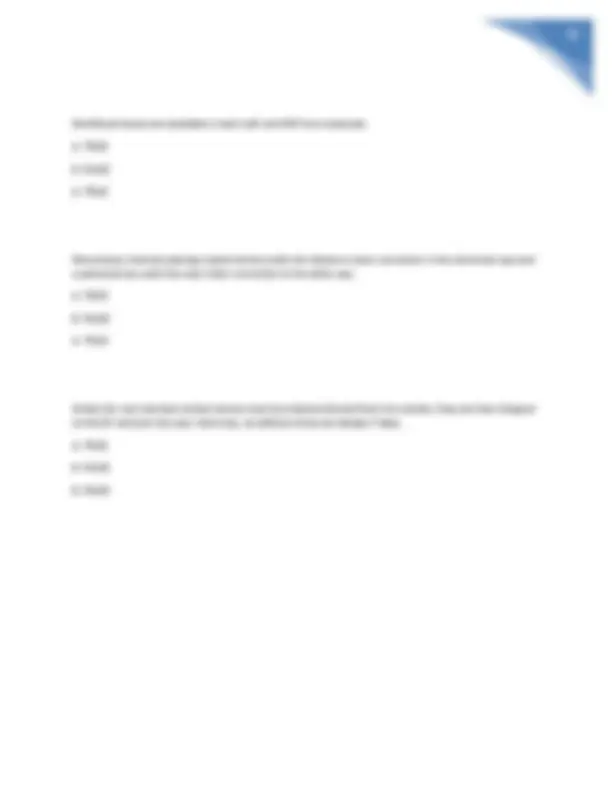


Study with the several resources on Docsity

Earn points by helping other students or get them with a premium plan


Prepare for your exams
Study with the several resources on Docsity

Earn points to download
Earn points by helping other students or get them with a premium plan
Community
Ask the community for help and clear up your study doubts
Discover the best universities in your country according to Docsity users
Free resources
Download our free guides on studying techniques, anxiety management strategies, and thesis advice from Docsity tutors
An overview of various ophthalmic examination tools and procedures. It covers topics such as the use of fundoscopic, opticscope, retinoscope, and foveascope instruments to examine the eye. It also discusses the use of a transilluminator to detect ocular tumors and assess the anterior chamber and eyelids. Key eye anatomy like the conjunctiva, lens, extraocular muscles, and optic disk. It also discusses common eye conditions like glaucoma, cataracts, diabetic retinopathy, and macular degeneration. Additionally, the document covers contact lens fitting, types of tears, and various refractive errors. Overall, this document serves as a comprehensive reference for understanding the tools and techniques used in ophthalmic examinations.
Typology: Exams
1 / 39

This page cannot be seen from the preview
Don't miss anything!
































Which tool shines a beam of light onto the retina to allow the OD to examine its movement? This tool allows the OD to place various lenses in front of the eye until movement stops, which helps determine the correct prescription for the Patient.
A. Fundoscopic
B. Opticscope
C. Retinoscope
D. Foveascope
C. Retinoscope
Which hand tool is useful for examining the sclera (white of the eyeball) to detect the presence of ocular tumors and assess the anterior chamber and eyelids?
A. Darkfield Illuminator
B. Transilluminator
C. Brightfield Illuminator
D. Optical Illuminator
B. Transilluminator
Brainpower
Read More
What is the term for the mucous membrane that lines the inside of the eyelids and the exposed part of the eyeball?
A. Conjunctiva
B. Descemet's membrane
C. Lipid Membrane
D. Choroid
A. Conjunctiva
What is the term for the major refracting body of the eye which has an approximate power of 17 diopters and gives the eye its power of accommodation?
A. Conjunctiva Lens
B. Lens Cortex
C. Lens Nucleus
D. Crystalline Lens
D. Crystalline Lens
What is the term for the six muscles outside of the eye that attaches to Tenon's Capsule and the sclera? These muscles are responsible for all movements of the eye.
A. Extraocular Muscles
B. Intraocular Muscles
C. Lateral Muscles
D. Intrinsic Muscles
A. Extraocular Muscles
For Patients wearing contact lenses, which procedure should be performed before the Patient removes them?
A. Retinal Imaging
B. Auto-Refraction
C. Lensometry
D. Visual Fields
D. Visual Fields
D. Optic Disk
Which condition occurs when the "intraocular pressure" (pressure inside the eye) is too high, thus affecting both the optic nerve and the images that are transmitted to the brain?
A. Glaucoma
B. Cataracts
C. Diabetic Retinopathy
D. Macular Degeneration
A. Glaucoma
What is the term for inflammation of the eyelids, usually caused by malfunctioning of the oil glands in the lids that empty near the base of the eyelashes?
A. Hordeolum
B. Blepharitis
C. Chalazion
D. Ptosis
B. Blepharitis
What is the term for the condition that appears as a swollen, reddish bump on the edge of an eyelid caused by bacterial infection and inflammation of a Meibomian gland?
A. Stye
B. Conjunctivitis
C. Blepharitis
D. Choroid
A. Stye
What is the term for a relatively common infection and/or inflammation of the eyelid and portions of skin around the eye? This infection may be caused by bacteria, viruses, or other pathogens.
A. Entropion
B. Conjunctivitis
C. Blepharitis
D. Periorbital Cellulitis
D. Periorbital Cellulitis
What are the three types of tears?
A. Direct Impact, Emotional Response, Lacrimal Sympathy Tears
B. Sense Reaction Tears, Stress-Induced Tears, Environmental Tears
C. Basal Tears, Reflex Tears, Emotional Tears
D. Empathy Tears, Environmental, Response Tears
C. Basal Tears, Reflex Tears, Emotional Tears
What is the term for a raised, wedge-shaped growth of the conjunctiva that extends onto the cornea?
A. Pterygium
B. Ocular Lump
C. Pyogenic
D. Granuloma Lipomas
A. Pterygium
What is the term for the inability to distinguish shades of color?
A. Color Blind
B. Tone Deaf
C. Color Absence
Which multifocal contact lens is usually made of rigid (GP) material with the reading portion located at the bottom?
A. Blended Bifocal
B. Segment Bifocal
C. Progressive Bifocal
D. Executive Bifocal
B. Segment Bifocal
Which contact lens has a gradual power change from the most plus (the add power) in the center of the lens to the distance prescription located near the edge of the lens, or vice-versa?
A. Aspheric Lens
B. Spherical Lens
C. Toric Lens
D. Multifocal Lens
A. Aspheric Lens
Which refractive error causes different focal lengths in different planes on the cornea, resulting in blurred vision at distance & at near?
A. Presbyopia
B. Myopia
C. Hyperopia
D. Astigmatism
D. Astigmatism
What is the term for the curve used as a base of a series of powers or the degree of curvature of the front surface of a lens?
A. Base Curve
B. Sphere
C. Axis
D. Cylinder
A. Base Curve
Pertaining to vision, "binocular" refers to which of the following?
A. With both eyes independently
B. With one eye
C. With both eyes
D. With one eye independently
C. With both eyes
What is the term for the angle at either end of the slit of the eyelids?
A. Canthus
B. Endothelium
C. Orbital exterior angle
D. Acute Angle
A. Canthus
Which retinal cells are responsible for color vision, daytime vision, and the central portion of the visual field?
A. Rods
B. Pips
C. Cones
D. Cups
A. Prism
B. Ptosis
C. Convex
D. Concave
A. Prism
Which of the following terms refers to paralytic drooping of the upper eyelid?
A. Palpebral drape
B. Ptosis
C. Limbus
D. Paraptosis
B. Ptosis
What additional procedure should be recommended in the pre-test room if a Patient informs you that they have a family history of glaucoma?
A. Visual Fields Test
B. Ishihara test
C. LASIK
D. Cataract surgery
A. Visual Fields Test
What is the term for the distance between the centers of the pupils, whether in distance or near positions?
A. Pupillary Distance
B. Papillary Distance
C. Pupil Interspace
D. Pupillary Range
A. Pupillary Distance
Which of the following methods is most effective for protecting eyes from sun damage?
A. Wearing rose-tinted lenses
B. Staying inside from 2PM-3PM every day
C. Wearing UV-blocking lenses
D. Using eye drops
C. Wearing UV-blocking lenses
Which of the following is the best definition of integrity?
A. The trait of being honorable, righteous, and straightforward
B. Being an important part of the team
C. The quality or stat or not being socially proper
D. A quality that gives something special worth
A. The trait of being honorable, righteous, and straightforward
Which of the following is the best way to show respect?
A. Do whatever others ask
B. Always agree with others
C. Be blunt and outspoken
D. Recognize individual differences
D. Recognize individual differences
On a prescription, what does the abbreviation BID stand for?
A. Endothelium
B. Stroma
D. Bowman's Layer
When referring to contact lenses, the base curve is the peripheral portion of the back surface of the contact lens.
A. TRUE
B. FALSE
B. FALSE
It is okay to remove the instrument body case, attempt to repair, or perform interior maintenance on any technician equipment that needs repair.
A. TRUE
B. FALSE
B. FALSE
Which fluid-filled chamber occupies the space between the back of the cornea (posterior surface) and the front of the iris (anterior surface)?
A. Posterior Chamber
B. Anterior Chamber
C. Atlas Chamber
D. Hydro Chamber
B. Anterior Chamber
Which of the fluid provides nutrients for the lens and posterior cornea, maintains intraocular pressure, and carries away waste products?
A. Aqueous Humor
B. Hydrogen Humor
C. Vitreous Humor
D. Lipid Humor
A. Aqueous Humor
What is the term for the border or margin of a structure, especially the junction of the cornea and sclera in the eye?
A. Geniculate Body
B. Neural Tunic
C. Fibrous Tunic
D. Limbus
D. Limbus
In the Contact Lens Reference Guide (CLRG), what does WD stand for?
A. Working Days
B. Will Deliver
C. Weight in Dreams
D. With Diagnosis
A. Working Days
Which point in the brain marks the end of the optic nerve, where images are transmitted to the correct portion of the brain to be recognized?
A. Fibrous Tunic
B. Neural Tunic
C. Geniculate Body
Mucous membrane that lines the eyelids and outer surface of the eyeball
Cornea
The transparent portion of the outer fibrous coat of the eyeball that covers the iris and the pupil. It is the first refracting body of the eye and yields a focal power of approximately 43 diopters. It contains five layers (in order): Epithelium, Bowman's Membrane, Stroma, Descemet's Membrane, and Endothelium.
Crystalline Lens
A major refracting body of the eye that gives the eye its power of accommodation. Located directly behind the iris, it is bi-convex in shape and has a focal power of approximately 17 diopters.
Extraocular muscles
The six muscles outside of the eye that attach to the Tenon's Capsule and the sclera. They are responsible for all movements of the eye.
Fibrous Tunic
One of the three structural groupings of the eye. It is the protective coat of the eye and consists of the sclera and cornea.
Fovea Centralis
A small depression in the retina of the eye where visual acuity is highest. The center of field of vision is focused in this region, where retinal cones are particularly concentrated.
Fundus
The interior surface of the eyeball.
Iris
The membrane in the front of the eye that contains the pupil and gives the eye color. It is a delicate and adjustable diaphragm that constricts and dilates in response to light.
Limbus
The border or margin of a structure, especially the junction of the cornea and sclera in the eye.
Macula
The area of the retina surrounding the fovea centralis which contains a dense concentration of blood vessels and cones.
Neural Tunic
One of the three structural groupings of the eye. It consists solely of the retina.
Optic Disk
The raised disk on the retina at the point of entry of the optic nerve; lacks visual receptors and so creates a blind spot.
Orbit
The orbit is the cavity or socket of the skull in which the eye and its appendages are situated. Orbit can refer to the bony socket, or it can also be used to imply the contents.
Vascular Tunic
One of the three structural groupings of the eye, consists of the iris, ciliary body, and choroid. It is also known as the uveal tract.
Vitreous Humor
The transparent gelatinous substance in the posterior (back) segment of the eye. It comprises nearly four-fifths of the volume of the eyeball.
Aberration
An imperfection in a lens which prevents a point of focus.
Accommodation
The ability of the eye to adjust focus for varying distances.
Achromatic
Descriptive of a lens capable of refracting light without creating a rainbow effect.
Acuity
The sharpness of vision (e.g., 20/20 distance).
Addition
The difference in plus power between the reading and distance portions of a multifocal lens.
Amblyopia
Also known as lazy eye. Develops in children where one eye has poorer vision than the other.
Ametropia
A refractive error in which the eye, when in a state of rest, does not focus the image of an object upon the retina; includes hyperopia, myopia, and astigmatism.
Aniseikonia
A condition in which the image of an object as seen by one eye differs so much in size or shape from that seen by the other eye that the two images cannot be fused into a single impression.
Anisometropia
A condition in which the two eyes have different refractive errors (e.g., one eye is farsighted and the other not).
Anterior Chamber
Front cavity or compartment of the eye, located between the cornea and the crystalline lens. Contains the aqueous humor.
Aqueous Humor
The clear fluid filling the space in the front of the eyeball between the lens and the cornea. It provides nutrients for the lens and posterior cornea and carries away waste products. It is responsible for maintaining the intraocular pressure. It is the only fluid continually produced in the eye.